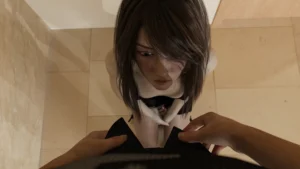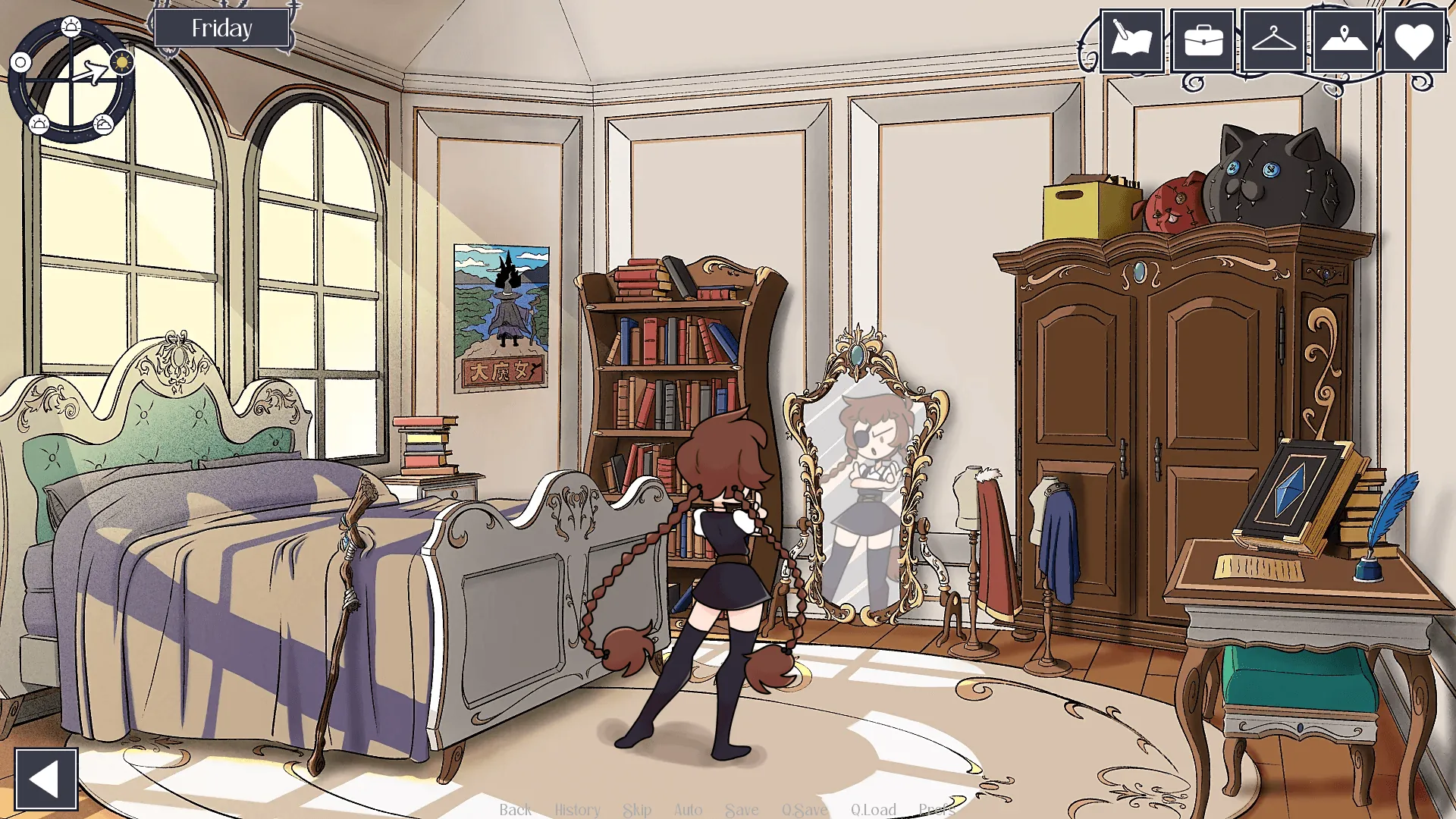
Play Bad Memories
Bad Memories review
Explore the emotional narrative and unique features of Bad Memories
Bad Memories is a narrative-driven game that immerses players in a deeply emotional story about childhood trauma, family struggles, and personal growth. Centered on the protagonist’s turbulent past, the game combines atmospheric visuals with branching dialogue and moral choices that shape the outcome. This article explores the key elements of Bad Memories, offering insights into its story, gameplay, characters, and practical tips to enhance your experience.
Unpacking the Storyline of Bad Memories
Let’s be honest – we’ve all played games where the story feels like an afterthought. You know the ones: you’re just going through the motions, blasting enemies with no real emotional stake in the outcome. 😴 But then, a game like Bad Memories comes along and completely flips the script. It doesn’t just want you to play; it demands that you feel. This emotional story Bad Memories delivers is its true core, making it a standout title for anyone who believes video games are a powerful storytelling medium.
If you’re ready to dive into a narrative that will stick with you long after the credits roll, you’re in the right place. Let’s pull back the curtain on this deeply personal journey.
What is the core narrative of Bad Memories?
At its heart, the Bad Memories storyline is a raw and unflinching portrait of a man named Elias grappling with the ghosts of his past. The game wastes no time plunging you into its emotional depths. You aren’t playing as a superhero or a chosen one; you’re simply a person trying to piece their life back together. The central premise is that Elias must literally revisit his most painful memories, which manifest as distorted, dream-like levels, to achieve some form of peace in his present.
The Bad Memories narrative is masterfully told through a dual timeline. In the present, we see Elias as a withdrawn and troubled adult, his life defined by silence and isolation. 🕰️ The real magic, however, happens when you step into the past. The game seamlessly transitions to key moments from his childhood, allowing you to experience the events that fractured his family firsthand.
Example: Narrative example illustrating a key emotional moment in the game
I’ll never forget one of the earliest flashbacks. You’re controlling a young Elias, and the objective is simple: “Make Dad smile.” The house is quiet, the lights are dim. You can try showing him a drawing, but he doesn’t look up from the bottle in his hand. You can turn on the TV to his favorite show, but he just stares through it. The game doesn’t tell you that you failed; it just lets the heavy, hopeless silence sit with you. That moment, more than any boss fight, taught me everything I needed to know about the Bad Memories game plot – it’s a story about the things we can’t fix and the scars that remain.
To help break down the core components, here’s a look at the narrative structure:
| Narrative Element | Description | Emotional Impact |
|---|---|---|
| The Inciting Incident | The sudden, tragic loss of Elias’s mother during his childhood. | Establishes the foundational trauma and the void in Elias’s life. 😢 |
| The Downward Spiral | His father’s descent into alcoholism and emotional neglect. | Creates a sense of instability and loneliness for the young protagonist. |
| The Present-Day Struggle | Adult Elias, isolated and haunted by unresolved grief. | Shows the long-term, devastating consequences of childhood trauma. |
| The Journey Within | Elias mentally revisiting these memories to confront them. | Offers a path toward potential healing and understanding. |
How do past events shape the protagonist’s journey?
Every single choice and challenge in Bad Memories is a direct consequence of Elias’s childhood. This isn’t a game where a tragic backstory is merely mentioned in a cutscene; it’s the very fabric of the gameplay and the protagonist’s psychology. The childhood trauma game mechanics are brilliantly integrated – your environment literally shifts and warps based on Elias’s emotional state. A memory of a happy birthday might be bright and clear, while a memory of his parents arguing is dark, fragmented, and difficult to navigate.
The most profound way the past shapes the journey is through the moral dilemmas Bad Memories presents. You are constantly forced to make choices, not between “good” and “evil,” but between painful truths and comforting lies. For instance, in one memory, you can choose to confront your father about his drinking or pretend everything is fine to keep a fragile peace. These aren’t gameplay gimmicks; they are the heart of Elias’s character development. Each decision you make influences how he perceives his past and, ultimately, what kind of man he becomes in the present.
His father’s complicated relationships, both with Elias and with new partners after his wife’s death, serve as a constant source of conflict. 👨👦 You witness these interactions from a child’s perspective, feeling the confusion, jealousy, and desperate need for love and stability. This foundation makes you understand why adult Elias is so closed off. His trust was broken early, and the game makes you feel the weight of that betrayal with every step he takes.
My Insight: What I found most compelling was that the game never offers easy answers. Confronting a painful memory doesn’t magically erase it. Sometimes, “winning” a level just means finally accepting that something horrible happened and learning to carry that weight without letting it crush you. It’s a remarkably mature approach to healing.
What themes are explored throughout the game?
The Bad Memories themes are woven so tightly into the narrative that they become inseparable from the experience itself. This is a game that has a lot on its mind, and it explores complex ideas with a rare sensitivity.
-
The Permanence of Loss and Grief: 🖤 This is the most prominent theme. The game explores how grief isn’t something you “get over,” but a companion that changes shape over time. It asks the player: How do you live with a hole in your life that can never be filled?
-
Redemption and Forgiveness: A major question the Bad Memories narrative poses is whether redemption is possible—both for Elias’s father and for Elias himself. Can his father be forgiven for his failures? More importantly, can Elias forgive himself for the childhood anger and powerlessness he still carries?
-
The Butterfly Effect of Choices: The moral dilemmas Bad Memories throws at you reinforce the theme that our choices, big and small, ripple through our lives. A harsh word spoken in grief, or a moment of kindness withheld, can define a relationship for years.
-
The Search for Identity: Who is Elias without his trauma? A large part of his journey is peeling back the layers of pain to rediscover the person he was meant to be before tragedy struck. This theme of personal growth is the glimmer of hope that guides you through the darkness.
Ultimately, the Bad Memories storyline is a powerful exploration of the human condition. It understands that our past, especially our childhood, is the lens through which we see the world. By forcing you to look directly through that lens—with all its cracks and distortions—the game creates a profound connection between you and Elias. You’re not just controlling him; you’re walking alongside him, feeling the echo of his Bad Memories in your own bones. And in doing so, it becomes more than a game; it’s a cathartic experience in understanding and empathy. ❤️🩹
Bad Memories offers a compelling blend of emotional storytelling, impactful player choices, and immersive gameplay that resonates deeply with players. Its unique narrative explores difficult themes through a richly developed world and memorable characters. Whether you are drawn to its story or gameplay mechanics, Bad Memories provides a meaningful experience that encourages reflection and engagement. Dive into the game to uncover its secrets and shape your own path through its unforgettable journey.




























